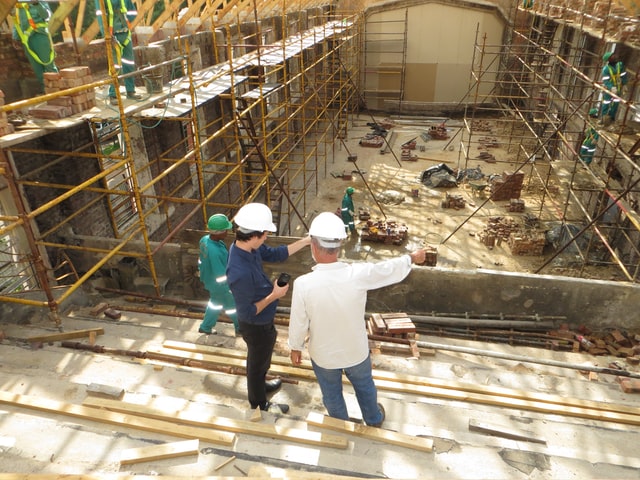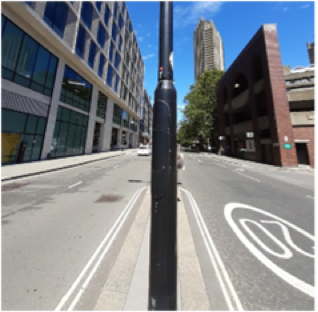How Workplace Exposure Monitoring Protects Employees & Ensures Legal Compliance
11-06-2025
Last updated 10-10-2025
Workplace exposure monitoring plays a key role in protecting employee health and ensuring employers meet their legal duties. From understanding what exposure is and how it’s measured, to knowing your responsibilities under regulations like COSHH, this guide walks employers through everything they need to know.
Whether you’re managing dust on a construction site, industrial exposure to chemical hazards, airborne particles, or asbestos risks, you’ll learn how to assess workplace exposure levels, interpret legal limits, and, where appropriate, take action to ensure your indoor air quality is compliant.
What is workplace exposure monitoring?
Workplace exposure monitoring is undertaken to assess workers’ exposure to potentially hazardous airborne substances in the workplace (e.g., in a machine room, on a factory floor, on a construction site, or in a commercial kitchenn or office).
Workplace exposure monitoring takes place under the Control of Substances Hazardous to Health (COSHH) framework; the COSHH regulations have been implemented to protect workers from ill health when working with certain substances or materials.
Air in the workplace (and/or directly in the workers’ breathing zone) is sampled and assessed to determine the concentration of a particular harmful substance in the air that the workers might be exposed to over a shift/working day.
What are workplace exposure limits?
The Health and Safety Executive (HSE) has published Workplace Exposure Limits (WELs) for a large number of potentially hazardous substances that people may be exposed to at work. The substances and potential exposures vary depending on the nature of the workplace, the materials used, and the processes adopted. The WELs are expressed as concentrations of a substance in air over defined exposure periods, ranging from 15 minutes to 1 hour (short-term exposure), to 8 hours (long-term exposure over a typical workplace shift).
Results from occupational exposure monitoring programmes can be compared against relevant WELs to determine if workers are exposed to potentially harmful concentrations of hazardous substances.
The Importance of Monitoring Workplace Hazards
Monitoring the air to determine workplace hazards is not just focused on meeting legal requirements. It protects employees from harm and businesses from risk. Without proper air quality monitoring, exposure can go unnoticed until it causes serious health problems or triggers regulatory action.
This section looks at why monitoring matters, how it supports safer working environments, and the role it plays in long-term compliance and risk management for your business.
Why must exposure be monitored in the workplace?
Occupational exposure monitoring may be necessary when a company wants to demonstrate compliance with relevant WELs. This can be part of a company’s standard health and safety management procedures to assess worker exposure or to formally report on WEL compliance directly to the HSE.
It can also help manage worker exposure by demonstrating the efficacy of exposure control equipment (e.g., air extraction, ventilation and filtration) or any need for Respiratory Protective Equipment (RPE). Engineering or personal protection measures might need to be stepped up if exposure to a substance is too high (i.e., above relevant WELs), and alternative working methods or engineering controls are not possible.
Why is it important to monitor safety in the workplace?
Occupational exposure monitoring can help to ensure that workers are operating in a safe environment, from a health perspective, with regard to the materials and processes they are using. It can also be helpful in terms of health surveillance – i.e., monitoring the health of workers to assess whether cumulative effects might be occurring from their exposure to certain substances, such as lead, that can accumulate in their bodies.
Types of Exposure & Monitoring Methods
Different jobs carry different risks, and knowing what those risks are is the first step to controlling them. Health risks from workplace exposure can come from chemicals, dusts or fumes, depending on the environment. Whether you operate in manufacturing, construction, healthcare, data centres, or another sector, understanding how exposure happens and how it is measured will help you protect your workers and keep your business compliant with the law.
What are the different kinds of workplace exposure?
Workplace exposure monitoring focuses on potentially harmful substances that may be present in the air in a workplace. The nature of the substance, its concentration in air and the exposure duration at a given concentration are all important factors. WELs are in place for short-term (typically 15-minute) and long term (8-hour) exposure scenarios for a large number of potentially harmful substances.
What, according to the HSE, are the two main drivers for undertaking occupational exposure monitoring?
According to the HSE, occupational exposure monitoring is appropriate when:
- An organisation needs/wants to show compliance with the relevant WELs;
- An organisation needs/wants to demonstrate that control equipment and/or PPE is working sufficiently well to minimise worker exposure to potentially hazardous substances.
What is an example of workplace exposure monitoring?
Worker exposure to dust is a fairly common assessment metric for many commercial/industrial operators; 8-hour WELs of 10 mg/m3 and 4 mg/m3 apply for inhalable and respirable dust fractions, respectively.
Phlorum has undertaken many occupational air quality monitoring surveys to assess worker exposure to airborne dust, in addition to crystalline silica and some other common chemicals associated with working in dusty environments.
Methods for Measuring Workplace Exposure
Exposure is assessed through a combination of direct and representative measurement of a substance of concern in the air in a workplace and the likely exposure durations of staff members to that substance.
How to test exposure limits?
Occupational exposure monitoring allows for a direct comparison against relevant WELs. The survey should target the substance(s) of concern, and the monitoring should take place when operations and activities that lead to the potential exposure are happening. The monitoring should be of sufficient duration to obtain a representative sample and to account for any laboratory analytical detection limits.
What is included in the exposure assessment?
The exposure assessment takes into account the measured concentration of the substance of concern and the duration that the worker is exposed to that substance over a working day, which is then referenced to an 8-hour period for direct comparison with relevant WELs (or shorter averaging periods for some compounds that have more acute health effects).
Understanding & Managing Workplace Exposure Limits
What is the PPM limit for workplace exposure?
WELs are in place for a large number of potentially hazardous substances. WELs are expressed as proportional concentrations (typically in units of ppm (parts per million) or mass concentrations (typically in units of mg/m3 (milligrams per cubic meter)) of substances in air, for long-term (8-hour) and short-term (typically 15-minute) reference periods.
What must be included in a workplace exposure plan?
The following need to be included:
- The substances of concern and any associated Material Safety Data Sheets (MSDS) and storage and handling requirements.
- Activities and operations that may lead to exposure.
- The employees that could potentially be exposed.
- Control measures that must be employed, including any PPE.
- Dates for exposure plan review, including review of hazardous substances used in the workplace and the potential for occupational exposure monitoring surveys to check compliance with relevant WELs and the efficacy of any control measures employed.
Employer Responsibilities Under COSHH Regulations
COSHH regulations set out exactly what UK employers must do to control substances that are hazardous to employees’ health. Whether you are working with chemicals, dusts or fumes, understanding your duties under COSHH is needed to stay compliant with the law.
What is Regulation 10 of COSHH?
COSHH Regulation 10 mandates that employers must monitor the exposure levels of hazardous substances in the workplace when a risk assessment indicates it is necessary to ensure adequate control of these substances.
Which regulations require employers to control workers’ exposure to lead?
The Control of Lead at Work Regulations 2002. The HSE has published an Approved Code of Practice (ACOP) on the Control of Lead at Work, and guidance to support the Regulations.
Which regulations contain the legal requirement for employers to assess and minimise their employees’ exposure to asbestos?
The legal requirement for employers to assess and minimise their employees’ exposure to asbestos is included in The Control of Asbestos Regulations 2012. The HSE has published an Approved Code of Practice (ACOP) on the Control of Asbestos Regulations, and guidance to support the Regulations.
Responding to Exposure Risks and Strengthening Controls
As an employer you must act quickly to reduce workplace exposure, strengthen controls and protect your workforce. That means understanding the purpose of exposure control, knowing the consequences of exceeding legal limits and recognising when health surveillance is required.
What is the purpose of exposure control?
The purpose of exposure control is to eliminate or sufficiently reduce worker exposure to harmful substances.
What happens if exposure limits are exceeded?
If Workplace Exposure Limits (WELs) are exceeded, the company should put in place control measures to reduce workers’ exposure to suitably low levels. If necessary, this might include the provision of Respiratory Protective Equipment (RPE).
The HSE may become actively involved to ensure that control measures are being implemented effectively and that worker health is protected.
Is health surveillance a legal requirement for every workplace?
Ongoing health surveillance is not a legal requirement for every workplace. Certain industries that use some types of hazardous material, for example, lead, which can accumulate in the body over time and cause long term harm, may be required to assess the health of workers over the long term (multiple years). This can include health surveillance, where blood or other samples are taken and analysed by medical professionals.
If you are unsure whether your current approach to workplace exposure monitoring meets required standards, or you need experienced air quality consultants to help strengthen your processes, get in touch. At Phlorum, we help UK businesses reduce risk, improve safety and stay compliant with the law.
Contact us today for a no-obligation consultation.



